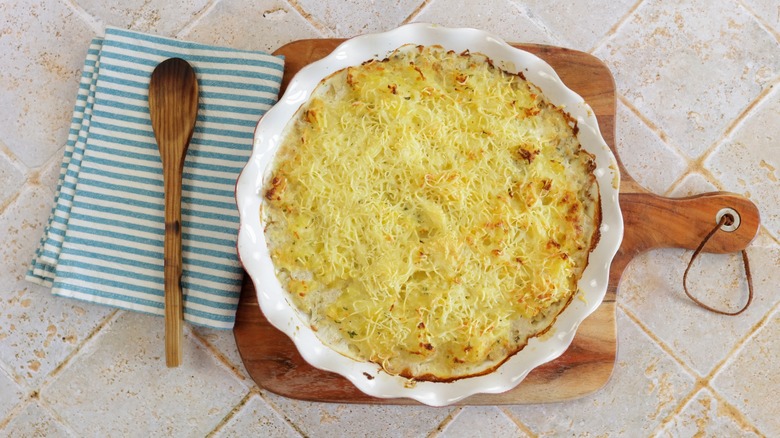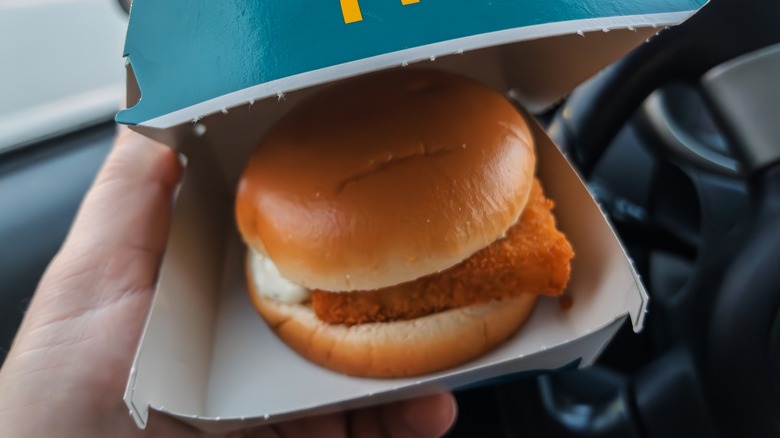The Filet-O-Fish is a staple of the McDonald’s menu — and for good reason. What started as a crafty way to corner the Catholic market (as they weren’t able to eat McDonald’s other, meatier menu items on Fridays) quickly grew into one of the Golden Arches’ most beloved menu items. A simple, satisfying combination of fried breaded fish, a pillowy soft bun, tartar sauce, and melted American cheese, the Filet-O-Fish is pretty much a perfect sandwich, beloved by chefs and customers alike. One Chicago restaurant, though, has taken on the task of making this humble fast food hero into a true gourmet dish.
Le Bouchon is a classic French bistro in Bucktown, Chicago, and has been open since 1993 — no mean feat for a restaurant. It’s been named as one of the best French restaurants in America, and serves classic, refined, Lyonnaise-style food in a relaxed setting.
So what does this French restaurant have to do with the Filet-O-Fish? Well, in a rather tongue-in-cheek move, the wizards in the kitchen at Le Bouchon have introduced a new lunch dish: a playful riff on the classic McDonald’s item, which they’re calling the “Filet-O-French.” It is, as you might expect, a fish sandwich featuring panko-breaded (and deep fried) brandade, pickled cucumber, radish, a bright fennel slaw with vinaigrette, tartar sauce, and what they call “Fromage Americaine” — all wrapped up in a wonderfully plump bun. At $19, it’s a little less affordable than the original, but is equally (if not more) delicious.
What exactly is a brandade, anyway?

page frederique/Shutterstock
The ingredients in a Filet-O-Fish are a perfect example of the philosophy that simple things done well are immensely satisfying. Take the fish, for example. It’s always been prepared simply — breaded and fried, nothing else. At Le Bouchon, though, things get a little more complicated.
At the heart of Le Bouchon’s sandwich is the fish, but it’s not a fillet of pollock. Rather, they use a brandade — an emulsion of salted cod with olive oil and plenty of garlic. It’s a staple in the south of France, and while more often than not it’s used as a dip and served with bread, at Le Bouchon they shape the mixture into a puck before deep frying it until golden and crispy.
Because brandade is so intensely salty, though, contrast is a requirement, and that’s where the fennel slaw comes in. We don’t know exactly how it’s made, but from the looks of Le Bouchon’s instagram, it’s a thinly sliced salad of fennel and radish, likely dressed with some citrus or vinegar for added acidity. Fennel’s subtly sweet, aniseed-y aromas will help cut through the salt of the brandade, balancing things out nicely. Then, the tang and richness of a great tartar sauce mellows the dish out. Of course, we would be remiss not to mention the cheese — “Fromage Americaine.” If you speak French, you already know what it is. If not, well, it’s a good ol’ slice of American cheese: The best cheese for a burger, and the only option for a Filet-O-Fish.
The Filet-O-French blends nostalgia and fine dining

VGV MEDIA/Shutterstock
So, why does the Filet-O-French work? In essence, it delivers what we all want in food, really: Something familiar, and something new. In creating this surprisingly refined sandwich, Le Bouchon has merged nostalgia, comfort, and an elevated approach to cooking, embodying in a humble fish sandwich the new and immensely popular culinary approach that favors playfulness and refinement in equal measure.
The sandwich taps into the cultural cache of its fast food counterpart, playing on our fondness for a food that for many is a childhood classic. Here, they redefine the sandwich through the use of classical technique and a sophisticated approach to flavor and texture that makes this a dish worthy of its place on any menu.
It’s important to note that this isn’t fast food. While it’s a tongue-in-cheek reference to a classic of the genre, the Filet-O-French is not a particularly simple sandwich to make — at least as far as fish sandwiches go! The brandade alone is a time-consuming component to make, requiring the salt cod to be deboned and soaked for at least a day in advance of making the emulsion, and though the final dish is a deceptively simple looking thing, there’s no shortage of technique involved. Sitting pretty on Le Bouchon’s lunch menu between Lyonnaise classics like Pâté en Croûte and Terrine de Canard, this sandwich showcases how a pun, of all things, can lead to quite bit of culinary innovation.


Dining and Cooking